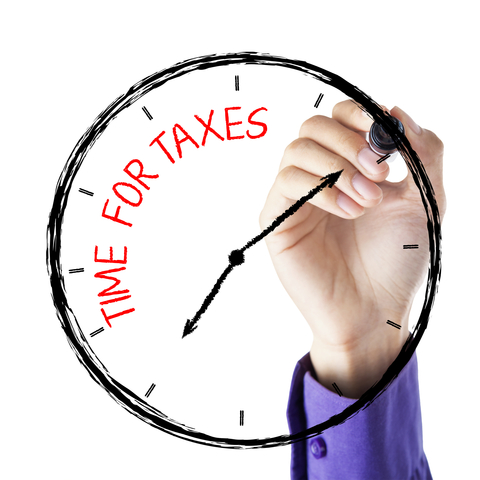 If you’re self-employed, there’s no tax withholding from your business earnings you can use to meet your tax obligation. Instead, you pay estimated taxes in four installments.
If you’re self-employed, there’s no tax withholding from your business earnings you can use to meet your tax obligation. Instead, you pay estimated taxes in four installments.
There are two main challenges with respect to estimated taxes:
- Figuring out how much to pay (so you don’t overpay and have to wait for a refund or underpay which can result in penalties); and
- Having enough cash available to make your installments.
Here are some strategies to help you address these challenges.
Rely on what you paid last year
Past is prologue for estimated taxes because relying on the past can (1) give you a good idea of how much to pay and (2) avoid estimated tax underpayments even if you fall short. Under one safe harbor from estimated tax penalties, as long as your estimated taxes for this year are at least 100% of your prior year tax liability (or 110% if your adjusted gross income in the prior year was at least $150,000, or $75,000 if married filing separately), there’s no underpayment penalty.
In order to use this penalty safe harbor, you need to know what your tax liability for last year actually is. This can be troublesome if your income fluctuates and you obtain a filing extension for your income tax return. For example, your first estimated tax payment for 2015 is due April 15, 2015, but if you have a filing extension for 2014 income tax return, you won’t know the final tax bill for 2014 on which to figure estimated taxes under this penalty safe harbor.
Project your bill for this year
A better way to make more accurate estimated tax payments (so you won’t overpay and have to wait for a tax refund or underpay so you have to come up with more cash at tax time) is to figure what you think you’ll actually owe this year. This can be done with the help of your tax advisor or using an IRS worksheet. Your estimate doesn’t have to be perfect; under a second safe harbor, as long as your estimate is 90% of the final tax bill, there won’t be any estimated tax penalty.
Set money aside for payments
One of the biggest challenges for many self-employed individuals is having the cash on hand to pay the estimated tax installment on time. This cash flow concern can be remedied by disciplined savings.
But how much do you need to save in light of the uneven time periods for the four estimated tax installments (April 15, June 15, September 15, and January 15 of next year)? A handy free tool that you can use to figure how much you need to save weekly so you’ll have your targeted payment on the installment due date is DynaTax’s calculator. Of course, it’s up to you to implement a savings plan for your targeted payment.
Conclusion
Estimated taxes are a fact of life for self-employed individuals. There may be alternatives for certain people (e.g., those with a working spouse who can use his/her withholding to cover the couple’s tax bill; sideliners who can use withholding from a job). But most self-employed individuals should plan for estimated taxes. Work with a tax advisor to get a handle on this tax responsibility.


